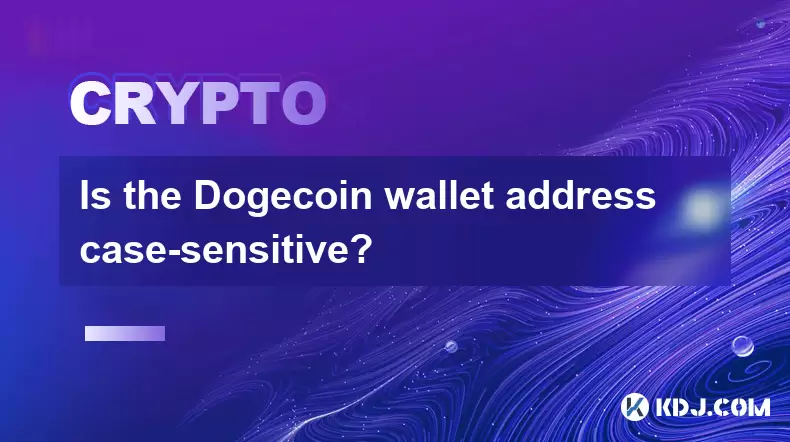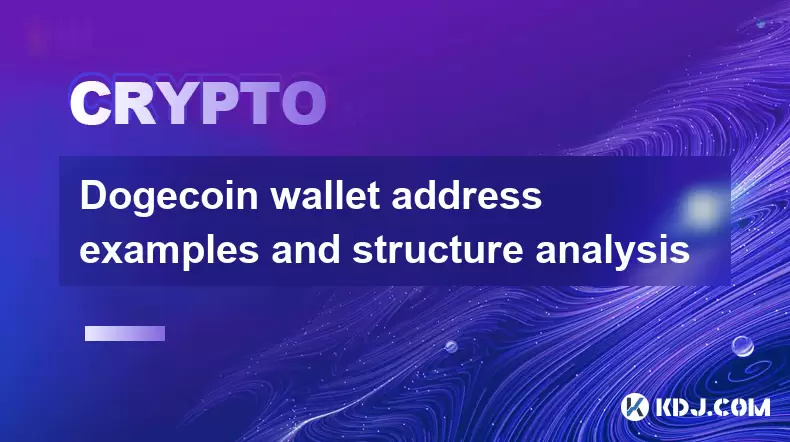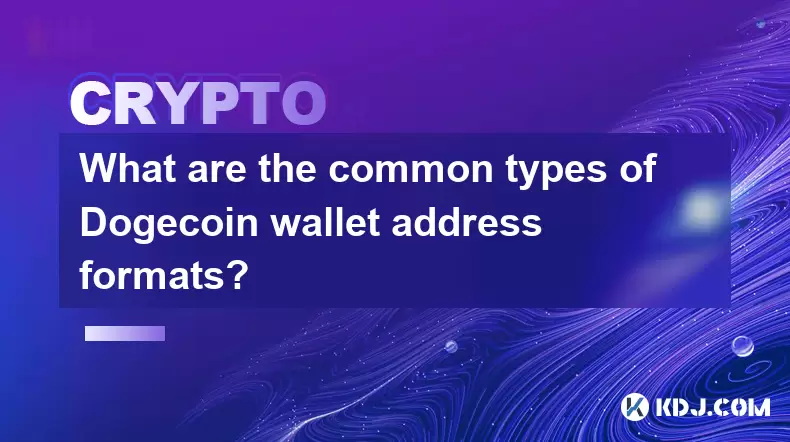-
 Bitcoin
Bitcoin $107,341.7259
0.15% -
 Ethereum
Ethereum $2,438.6204
0.70% -
 Tether USDt
Tether USDt $1.0003
-0.02% -
 XRP
XRP $2.1866
1.94% -
 BNB
BNB $649.0952
0.36% -
 Solana
Solana $150.9602
5.63% -
 USDC
USDC $0.9999
0.00% -
 TRON
TRON $0.2742
0.40% -
 Dogecoin
Dogecoin $0.1645
1.93% -
 Cardano
Cardano $0.5669
1.18% -
 Hyperliquid
Hyperliquid $37.8286
4.19% -
 Bitcoin Cash
Bitcoin Cash $491.4669
-2.74% -
 Sui
Sui $2.8150
3.06% -
 Chainlink
Chainlink $13.4184
2.91% -
 UNUS SED LEO
UNUS SED LEO $9.0809
0.27% -
 Avalanche
Avalanche $18.0295
2.60% -
 Stellar
Stellar $0.2396
1.19% -
 Toncoin
Toncoin $2.8587
0.13% -
 Shiba Inu
Shiba Inu $0.0...01160
2.59% -
 Litecoin
Litecoin $86.4192
1.45% -
 Hedera
Hedera $0.1486
1.19% -
 Monero
Monero $308.4324
0.87% -
 Polkadot
Polkadot $3.4202
1.43% -
 Bitget Token
Bitget Token $4.6436
-0.34% -
 Dai
Dai $0.9998
-0.02% -
 Ethena USDe
Ethena USDe $1.0002
0.00% -
 Uniswap
Uniswap $7.1527
3.29% -
 Pi
Pi $0.5357
-8.45% -
 Pepe
Pepe $0.0...09588
4.61% -
 Aave
Aave $259.9759
0.81%
What are the technical principles and blockchain foundations of Dogecoin?
Dogecoin uses the Scrypt algorithm and Proof-of-Work, differing from Bitcoin's SHA-256 and possessing an inflationary model. Its blockchain structure mirrors others, storing transaction history in a distributed, immutable ledger.
Mar 11, 2025 at 04:25 pm

Key Points:
- Dogecoin's technical foundation rests upon the Scrypt hashing algorithm and a modified version of the Litecoin core codebase.
- It employs a Proof-of-Work (PoW) consensus mechanism, requiring miners to solve complex cryptographic puzzles to validate transactions and add new blocks to the blockchain.
- Dogecoin's inflation model is different from Bitcoin's, resulting in a continuously increasing supply of DOGE.
- The blockchain's structure is similar to other cryptocurrencies, storing transaction history and maintaining a distributed ledger.
- Understanding Dogecoin's technical aspects requires familiarity with basic blockchain concepts and cryptographic principles.
What are the technical principles and blockchain foundations of Dogecoin?
Dogecoin, a cryptocurrency initially created as a lighthearted alternative to Bitcoin, operates on a foundation of established blockchain technology. However, it possesses unique technical characteristics that differentiate it from other cryptocurrencies. Let's delve into the core technical principles underpinning Dogecoin's functionality.
Hashing Algorithm and Consensus Mechanism:
Dogecoin utilizes the Scrypt hashing algorithm, known for its relative resistance to ASIC mining (Application-Specific Integrated Circuit). This choice aimed to democratize mining, allowing individuals with standard computer hardware a better chance to participate in the network's validation process compared to Bitcoin's SHA-256 algorithm which heavily favors specialized ASIC miners. Dogecoin's consensus mechanism is Proof-of-Work (PoW), meaning miners compete to solve complex cryptographic puzzles to validate transactions and add new blocks to the blockchain. The first miner to solve the puzzle gets to add the block and receives a reward in DOGE.
Blockchain Structure and Data Storage:
Dogecoin's blockchain structure mirrors that of other cryptocurrencies. It's a distributed, immutable ledger that records every transaction publicly and transparently. Each block contains a set of validated transactions, a timestamp, and a hash linking it to the previous block, creating a chronologically ordered chain. This structure ensures the integrity and security of the network, making it extremely difficult to alter past transactions. The distributed nature means multiple copies of the blockchain exist across the network, preventing single points of failure.
Transaction Validation and Security:
Transaction validation in Dogecoin relies heavily on the PoW consensus mechanism. Once a transaction is broadcast to the network, miners verify its validity by checking for sufficient funds in the sender's address and ensuring the transaction adheres to the network's rules. Once validated, the transaction is included in a block, which is then added to the blockchain after it's been verified by other nodes on the network. The cryptographic hash function ensures the integrity of each block and the entire chain. This process ensures security against fraudulent transactions and double-spending attempts.
Dogecoin's Inflationary Model:
Unlike Bitcoin which has a fixed maximum supply, Dogecoin has an inflationary model. This means that new DOGE are continuously created and added to the circulating supply. The inflation rate is not fixed and reduces over time. This constant influx of new coins is one of the key differences between Dogecoin and many other cryptocurrencies. The continuous creation of new coins contributes to its ongoing supply and affects its price dynamics.
Comparison to other Cryptocurrencies:
Dogecoin shares similarities with other cryptocurrencies built on the PoW consensus mechanism, such as Litecoin. However, key differences exist, particularly in its hashing algorithm (Scrypt vs. SHA-256) and its inflationary model. These differences contribute to its unique characteristics in terms of mining difficulty, transaction speed, and overall economic model. Understanding these technical distinctions is crucial for a comprehensive understanding of Dogecoin's place within the cryptocurrency ecosystem.
Dogecoin's Codebase and Development:
Dogecoin's codebase is largely based on Litecoin's core code, inheriting many of its features and functionalities. However, modifications and updates have been implemented over time to address specific needs and improvements. The open-source nature of the code allows for community contributions and continuous development, fostering transparency and collaboration within the Dogecoin ecosystem. This open-source nature allows for scrutiny and improvement by the community.
The Role of Mining in Dogecoin:
Mining plays a crucial role in maintaining the security and integrity of the Dogecoin network. Miners contribute computational power to solve complex cryptographic puzzles, validating transactions and adding new blocks to the blockchain. In return for their efforts, they receive a reward in DOGE. The mining process is essential for securing the network and preventing malicious activities. The competition among miners ensures the network's robustness and prevents manipulation.
Understanding Dogecoin's Technology:
A comprehensive understanding of Dogecoin requires familiarity with core blockchain concepts like cryptography, hashing algorithms, and consensus mechanisms. It also involves grasping the nuances of its specific implementation, including the Scrypt algorithm, its inflationary model, and its open-source codebase. Understanding these technical aspects provides a deeper appreciation for its functioning and its place within the broader cryptocurrency landscape.
Frequently Asked Questions:
Q: Is Dogecoin's Scrypt algorithm more energy-efficient than Bitcoin's SHA-256?
A: While Scrypt was designed to be more resistant to ASIC mining, making it potentially more energy-efficient for individual miners using standard hardware, the overall energy consumption of the Dogecoin network depends on various factors, including the hash rate and the efficiency of the mining hardware used. It's not inherently more or less energy-efficient than SHA-256 in absolute terms.
Q: How does Dogecoin's inflationary model impact its long-term value?
A: Dogecoin's inflationary model is a subject of debate. While a constantly increasing supply could potentially dilute the value of each DOGE, its impact depends on factors such as adoption rate, demand, and overall market sentiment. The continuous creation of new coins also means there's a constant supply entering the market.
Q: Is Dogecoin's blockchain truly decentralized?
A: Like most cryptocurrencies, Dogecoin aims for decentralization through its distributed ledger technology. However, the degree of decentralization can vary depending on factors like the distribution of mining power and the level of participation from different nodes on the network. While it strives for decentralization, perfect decentralization is a complex ideal to achieve.
Q: How secure is the Dogecoin blockchain?
A: The security of the Dogecoin blockchain relies on the cryptographic security of its hashing algorithm, the PoW consensus mechanism, and the distributed nature of the network. However, like any blockchain, it's susceptible to vulnerabilities, and its security is constantly evolving and depends on community participation and ongoing development.
Q: What are the main differences between Dogecoin and Litecoin's technical implementations?
A: While Dogecoin is based on Litecoin's codebase, key differences exist, primarily in the specific parameters of the Scrypt algorithm and the long-term inflation rate. The community governance and development paths also diverge over time. These subtle differences lead to different network characteristics.
Disclaimer:info@kdj.com
The information provided is not trading advice. kdj.com does not assume any responsibility for any investments made based on the information provided in this article. Cryptocurrencies are highly volatile and it is highly recommended that you invest with caution after thorough research!
If you believe that the content used on this website infringes your copyright, please contact us immediately (info@kdj.com) and we will delete it promptly.
- Kitten Craze Online: Hunting for the Purr-fect Coin Purse
- 2025-06-29 10:30:12
- Pudgy Penguins Soar to 3-Month High Amidst PENGU ETF Buzz!
- 2025-06-29 10:30:12
- AI Agents, Token Role, and Capitalization: Navigating the Web3 Frontier
- 2025-06-29 10:50:11
- Avalanche Price Forecast: Grayscale Boost Signals Potential Rally to $50?
- 2025-06-29 10:50:11
- Khazan's Getting a Facelift: Balance Changes and Freebies Galore!
- 2025-06-29 11:10:12
- Wall Street's Crypto Rival Battle: Saylor vs. Chanos and the Meme Coin Mania
- 2025-06-29 11:10:12
Related knowledge

How to extract the public key from a Bitcoincoin wallet address?
Jun 16,2025 at 07:49am
Understanding the Relationship Between a Dogecoin Address and Its Public KeyIn the world of Dogecoin (DOGE), users often interact with wallet addresses but rarely see the underlying cryptographic components such as the public key or private key. A Dogecoin address is derived from the public key through a series of hashing operations. Specifically, the p...

What is the difference between a Bitcoincoin wallet address and a Bitcoin address?
Jun 22,2025 at 10:28pm
Understanding the Fundamentals of Cryptocurrency AddressesIn the world of cryptocurrencies, wallet addresses serve as unique identifiers for users to send and receive digital assets. Each cryptocurrency typically has its own address format, which is derived from cryptographic algorithms and encoding methods. Both Dogecoin and Bitcoin utilize public-key ...

Is the Dogecoin wallet address case-sensitive?
Jun 15,2025 at 10:15pm
Understanding the Structure of a Dogecoin Wallet AddressA Dogecoin wallet address is a unique alphanumeric string used to receive and send DOGE. It typically starts with the letter 'D' and contains a combination of uppercase and lowercase letters along with numbers. The structure is based on cryptographic principles derived from public-key cryptography,...

How to verify whether a string is a valid Bitcoincoin wallet address?
Jun 14,2025 at 01:57am
Understanding the Structure of a Dogecoin Wallet AddressA Dogecoin wallet address is typically composed of a combination of letters and numbers, starting with the letter 'D'. This structure follows the same format as other cryptocurrencies that use the Bitcoin protocol, but with specific prefixes unique to Dogecoin. The standard length for a Dogecoin ad...

Dogecoin wallet address examples and structure analysis
Jun 13,2025 at 09:42pm
Understanding Dogecoin Wallet AddressesA Dogecoin wallet address serves as a unique identifier for receiving and sending DOGE. It functions similarly to a bank account number but is designed specifically for blockchain transactions. Each address consists of a combination of letters and numbers, typically starting with the letter 'D'. These addresses are...

What are the common types of Dogecoin wallet address formats?
Jun 15,2025 at 08:21pm
Understanding Dogecoin Wallet AddressesDogecoin wallet addresses are alphanumeric strings used to send and receive DOGE. These addresses follow specific formats that define their structure and compatibility with different wallets and blockchain explorers. Understanding these formats is crucial for ensuring secure transactions and proper integration with...

How to extract the public key from a Bitcoincoin wallet address?
Jun 16,2025 at 07:49am
Understanding the Relationship Between a Dogecoin Address and Its Public KeyIn the world of Dogecoin (DOGE), users often interact with wallet addresses but rarely see the underlying cryptographic components such as the public key or private key. A Dogecoin address is derived from the public key through a series of hashing operations. Specifically, the p...

What is the difference between a Bitcoincoin wallet address and a Bitcoin address?
Jun 22,2025 at 10:28pm
Understanding the Fundamentals of Cryptocurrency AddressesIn the world of cryptocurrencies, wallet addresses serve as unique identifiers for users to send and receive digital assets. Each cryptocurrency typically has its own address format, which is derived from cryptographic algorithms and encoding methods. Both Dogecoin and Bitcoin utilize public-key ...

Is the Dogecoin wallet address case-sensitive?
Jun 15,2025 at 10:15pm
Understanding the Structure of a Dogecoin Wallet AddressA Dogecoin wallet address is a unique alphanumeric string used to receive and send DOGE. It typically starts with the letter 'D' and contains a combination of uppercase and lowercase letters along with numbers. The structure is based on cryptographic principles derived from public-key cryptography,...

How to verify whether a string is a valid Bitcoincoin wallet address?
Jun 14,2025 at 01:57am
Understanding the Structure of a Dogecoin Wallet AddressA Dogecoin wallet address is typically composed of a combination of letters and numbers, starting with the letter 'D'. This structure follows the same format as other cryptocurrencies that use the Bitcoin protocol, but with specific prefixes unique to Dogecoin. The standard length for a Dogecoin ad...

Dogecoin wallet address examples and structure analysis
Jun 13,2025 at 09:42pm
Understanding Dogecoin Wallet AddressesA Dogecoin wallet address serves as a unique identifier for receiving and sending DOGE. It functions similarly to a bank account number but is designed specifically for blockchain transactions. Each address consists of a combination of letters and numbers, typically starting with the letter 'D'. These addresses are...

What are the common types of Dogecoin wallet address formats?
Jun 15,2025 at 08:21pm
Understanding Dogecoin Wallet AddressesDogecoin wallet addresses are alphanumeric strings used to send and receive DOGE. These addresses follow specific formats that define their structure and compatibility with different wallets and blockchain explorers. Understanding these formats is crucial for ensuring secure transactions and proper integration with...
See all articles

























































































